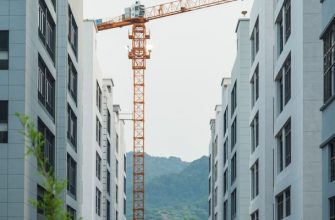- Understanding Real World Assets: The Basics of Tokenization
- How Tokenization is Revolutionizing Asset Ownership
- Exploring the Benefits of Tokenizing Physical Assets
- The Role of Blockchain in Real World Asset Tokenization
- Challenges and Opportunities in the Tokenization of Assets
- Future Trends: Where Tokenization of Real World Assets is Heading
Understanding Real World Assets: The Basics of Tokenization
Tokenization is a transformative process that brings real-world assets into the digital realm. This innovative approach allows tangible items, such as real estate, art, and commodities, to be represented as digital tokens on a blockchain. By converting these physical assets into tokens, they become more accessible and easier to trade, providing new opportunities for investors and enhancing liquidity in various markets.
One of the primary benefits of tokenization is the ability to fractionalize ownership. Instead of requiring a significant capital investment to purchase an entire asset, tokenization enables multiple investors to own a fraction of a valuable item. This democratization of investment opens doors for a broader audience, allowing participation in markets that were previously reserved for the affluent.
The process of tokenization involves several key steps:
- Asset Evaluation: The asset’s value is assessed to determine its market worth and potential for tokenization.
- Legal Framework: Establishing a legal structure to ensure compliance with regulations is essential. This includes intellectual property rights, ownership verification, and any applicable securities laws.
- Token Creation: Tokens are generated on a blockchain, representing the asset’s ownership and rights associated with it.
- Marketplace Integration: The tokenized asset is listed on digital platforms, allowing buyers and sellers to trade easily.
- Ongoing Management: Continuous monitoring and management of the asset, along with its associated tokens, ensure transparency and trust within the ecosystem.
Tokenization not only enhances liquidity but also increases security and transparency in asset transactions. By utilizing blockchain technology, all transactions are recorded on a public ledger, minimizing the risk of fraud and ensuring that ownership can be easily verified. This increased trust facilitates smoother transactions and encourages wider participation in investment opportunities.
In summary, understanding the basics of tokenization reveals its potential to revolutionize how real-world assets are viewed and traded. By bridging the gap between physical and digital assets, tokenization empowers individuals and institutions alike, creating a more inclusive financial landscape.
How Tokenization is Revolutionizing Asset Ownership
Tokenization is transforming the landscape of asset ownership by leveraging blockchain technology to create digital representations of tangible assets. This innovative approach allows for the fractionalization of assets, making it feasible for a broader audience to invest in high-value items such as real estate, art, and commodities. By converting physical assets into tokens, ownership can be easily transferred, tracked, and verified on a decentralized ledger, enhancing transparency and security.
One of the key benefits of tokenization is the democratization of investment opportunities. Previously, access to certain assets was limited to wealthy individuals or institutional investors. Now, with tokenized assets, individuals can own a fraction of a high-value asset, thereby lowering the barrier to entry. This shift not only expands the investor base but also increases liquidity in traditionally illiquid markets.
- Enhanced Liquidity: Tokenization enables assets to be traded on secondary markets, providing investors with more options to buy and sell.
- Reduced Costs: By eliminating intermediaries in transactions, tokenization can lower fees associated with asset transfers.
- Global Access: Investors from around the world can participate in markets that were previously inaccessible due to geographical limitations.
- Increased Transparency: Blockchain technology ensures that all transactions are recorded immutably, providing a clear audit trail for each asset.
This paradigm shift in asset ownership not only redefines how investments are made but also paves the way for new business models and revenue streams. As more industries adopt tokenization, the potential for innovation and growth becomes limitless. The future of asset ownership is not just about possession; it’s about creating a more inclusive and efficient market for everyone.
Exploring the Benefits of Tokenizing Physical Assets
Tokenization of physical assets presents a revolutionary approach to managing and investing in real-world properties. By converting tangible items into digital tokens on a blockchain, the ownership and transfer of these assets become streamlined and efficient. This innovative process not only enhances liquidity but also ensures greater accessibility for a wider range of investors.
- Increased Liquidity: Tokenizing physical assets facilitates quicker transactions, allowing owners to easily buy, sell, or trade their holdings without the lengthy processes typically associated with traditional asset transfers.
- Fractional Ownership: Tokenization enables fractional ownership, allowing multiple investors to own a portion of high-value assets, such as real estate or art, thus lowering the barrier to entry for investment.
- Enhanced Transparency: Blockchain technology provides a transparent ledger of ownership and transaction history, ensuring that all parties involved can verify the authenticity and provenance of the asset.
- Cost Efficiency: By reducing intermediaries involved in transactions, tokenization can lower costs associated with buying and selling physical assets, leading to more favorable returns for investors.
- Global Reach: Tokenized assets can be traded across borders, allowing investors from different countries to participate in markets that were previously inaccessible.
The benefits of tokenizing physical assets create a more inclusive investment landscape. As the technology continues to evolve, the potential for tokenization to transform traditional asset management and investment practices becomes increasingly apparent. This disruption in the financial ecosystem not only democratizes access to investments but also fosters a more efficient and secure market environment.
The Role of Blockchain in Real World Asset Tokenization
Blockchain technology plays a pivotal role in the tokenization of real-world assets, offering a decentralized, secure, and transparent framework for asset management. By leveraging blockchain, the process of converting physical assets into digital tokens becomes streamlined and efficient, enhancing accessibility and liquidity.
Tokenization through blockchain allows for fractional ownership, enabling investors to purchase a portion of high-value assets, such as real estate, art, or precious metals. This democratization of investment opportunities can lead to a more inclusive financial ecosystem, where diverse individuals can participate in markets previously reserved for affluent investors.
- Transparency: All transactions and ownership records are securely stored on the blockchain, ensuring a clear audit trail and reducing the risk of fraud.
- Security: Blockchain’s cryptographic techniques safeguard asset data, making it resistant to tampering and unauthorized access.
- Efficiency: The automation of transactions through smart contracts minimizes the need for intermediaries, reducing costs and time associated with asset transfers.
- Global Reach: Blockchain facilitates cross-border transactions, allowing investors from different regions to access and trade tokenized assets seamlessly.
Furthermore, the integration of blockchain in asset tokenization promotes liquidity by enabling the trading of tokens on various exchanges. This liquidity is essential for attracting a broader range of investors, as it enhances the ability to buy and sell assets quickly without significant price fluctuations.
As the adoption of blockchain technology continues to grow, its influence on the tokenization of real-world assets is set to reshape traditional investment landscapes. The convergence of these two innovations presents numerous opportunities for both investors and asset owners, driving forward a new era of financial inclusivity and transparency.
Challenges and Opportunities in the Tokenization of Assets
The tokenization of assets presents a variety of challenges and opportunities that are crucial for stakeholders to understand. One of the primary challenges lies in the regulatory landscape, which varies significantly across jurisdictions. This inconsistency can create barriers for businesses seeking to engage in asset tokenization. Ensuring compliance with local laws while leveraging the benefits of tokenized assets requires careful navigation and legal expertise.
Another significant challenge is the technological infrastructure necessary for effective asset tokenization. The blockchain technology that underpins tokenization must be robust, secure, and scalable. Moreover, integrating traditional asset management systems with blockchain platforms can pose technical hurdles that need to be addressed for successful implementation.
- Market Education: Many investors and stakeholders lack understanding of tokenized assets, necessitating educational initiatives to promote awareness and trust.
- Liquidity Issues: While tokenization can enhance liquidity, some assets may still face challenges in achieving sufficient market demand and trading volume.
- Cybersecurity Risks: The digital nature of tokenized assets makes them susceptible to cyber threats, highlighting the importance of robust security measures.
Despite these challenges, the opportunities associated with the tokenization of assets are significant. Tokenized assets can democratize access to investment opportunities, allowing a broader range of investors to participate in markets that were previously inaccessible. This democratization can lead to increased capital inflow and diversification for asset classes.
Additionally, tokenization enhances transparency and traceability, as each transaction is recorded on a blockchain, providing an immutable record of ownership and history. This feature can build trust among investors and stakeholders, facilitating smoother transactions and reducing fraud.
Furthermore, tokenization can streamline processes, reducing administrative overhead and transaction costs. By automating processes like compliance, settlements, and record-keeping through smart contracts, businesses can operate more efficiently in the tokenized asset ecosystem.
In conclusion, while the tokenization of assets comes with its set of challenges, the potential benefits far outweigh the drawbacks. By addressing regulatory, technological, and educational hurdles, stakeholders can fully leverage the opportunities presented by tokenization, driving innovation and growth in various sectors.
Future Trends: Where Tokenization of Real World Assets is Heading
The future of tokenization is poised for significant transformation as technology continues to evolve. Tokenization of real world assets (RWAs) is becoming a beacon of innovation, attracting attention from investors, businesses, and regulatory bodies alike. This paradigm shift is driven by the need for greater liquidity, transparency, and accessibility in asset management.
- Enhanced Accessibility: Tokenization allows a broader audience to invest in high-value assets, breaking down barriers that traditionally limited participation. This democratization is expected to lead to increased investment in previously inaccessible markets.
- Improved Liquidity: By converting real world assets into digital tokens, these assets can be traded on various platforms, enhancing liquidity. This is particularly beneficial for illiquid assets like real estate and fine art, which can now be fractionally owned and traded.
- Regulatory Developments: As the tokenization of RWAs gains traction, regulatory frameworks are evolving. Governments are beginning to establish guidelines that promote safe and secure trading practices, fostering confidence among investors.
- Integration with DeFi: The convergence of tokenized assets and decentralized finance (DeFi) is another future trend. This integration allows for innovative financial products that leverage the liquidity of tokenized RWAs, creating new opportunities for users.
- Interoperability: Future advancements will likely focus on improving interoperability between different blockchain networks, facilitating seamless transactions across platforms. This will enhance the overall efficiency of trading tokenized real world assets.
In summary, the tokenization of real world assets is set to redefine investment landscapes, making them more inclusive and efficient. As technology and regulations continue to advance, the potential for tokenized RWAs will expand, leading to innovative financial solutions and investment opportunities.










I’ve always been curious about how tokenization works in the real estate industry. This article provided a clear and concise introduction to the topic, and I now feel more informed about the benefits and implications of tokenizing real world assets.
As a cryptocurrency enthusiast, I found this article to be very informative. It’s fascinating to see how blockchain technology is revolutionizing the real estate market through tokenization. Can you explain more about the potential risks involved in this process?
I had heard about tokenization before, but this article really helped me understand the practical applications of tokenizing real estate assets. It’s amazing how technology is changing the way we invest in properties. How can someone get started with investing in tokenized real estate?